In this bi-weekly series reviewing classic science fiction and fantasy books, Alan Brown looks at the front lines and frontiers of the field; books about soldiers and spacers, scientists and engineers, explorers and adventurers. Stories full of what Shakespeare used to refer to as “alarums and excursions”: battles, chases, clashes, and the stuff of excitement.
Even as science fiction was establishing itself as a genre in its own right, from the very start there have always been writers who’ve mixed in elements from various other literary genres. Horror and science fiction were a natural fit for this type of genre-bending, with all sorts of alien monsters to choose from. Mystery was not always felt to be a good match with the broad possibilities of science fiction, but authors have been making the combination work for decades. And science fiction has often blended with fantasy, with elements and themes from fantasy frequently appearing in science fiction stories. One of my favorite works to meld science fiction and fantasy is the novel Doc Sidhe by Aaron Allston, which created a main character obviously inspired by the pulp hero Doc Savage but places him in a world of Celtic mythology. It sounds like a strange combination, but Allston makes it work, crafting a thrilling story that that pays homage to two rich literary traditions at the same time.
You can simply take a story like Doc Sidhe at face value, and enjoy it for what it is. But if you want to dig into the different elements that have been blended together, the internet provides some pretty interesting rabbit holes in which to go diving.
Science fiction is a broad genre, and finding an exact definition that fits all its permutations and subgenres remains a challenge, though it tends to center around distinctive themes and elements. You can find a definition of science fiction at the online Encyclopedia of Science Fiction, and also an article that looks at the boundaries of the science fiction genre. There is also an entry on pulp fiction, which provides a history of the pulp magazines and looks at the characteristics of stories from the era—stories like the adventures of Doc Savage.
On the fantasy side, which is covered by the companion Encyclopedia of Fantasy, you can find an entry on Celtic fantasy, along with articles on related topics like folklore, magic, myths, and legends.
About the Author
Aaron Allston (1960-2014) was an America game designer and fantasy and science fiction author, doing most of his writing in media or gaming adaptations. He edited the short-lived Space Gamer magazine and worked on role-playing games, including Dungeons and Dragons, Car Wars, GURPS, and many others.
Allston is best known for his Star Wars novels, especially the X-Wing books that continued the series begun by Michael Stackpole. In all, he wrote 13 Star Wars novels and a pair of short stories for Star Wars Insider magazine. He was known for carefully researching his stories to make them fit the existing Star Wars canon. Outside of the Star Wars universe, he wrote nine other novels, including Doc Sidhe, and a sequel, Sidhe-Devil.
Pulp Adventure Meets Celtic Mythology
I have long been a fan of the Doc Savage adventure novels, having discovered them when Bantam reprinted the novels in the 1960s. The stories were episodic, with Doc and his team facing a mystery and neatly solving it before the tale was over, with all the main characters unchanged by the adventure so they could appear in the next volume. The books were full of just the sort of action and adventure that appealed to a young reader like me, and at 50 cents apiece, could be purchased with my weekly allowance. I’ve looked at the world of Doc Savage twice before in this column (here and here).
Doc was first and foremost a scientist, and unraveling some sort of scientific puzzle was often at the heart of the tales. Some of the stories had science fictional settings, featuring civilizations deep inside the earth and devices that, at the time, represented the cutting edge of what science could accomplish (although some of those speculations on the cutting edge veered into the improbable). It might seem as if Doc Savage would not work in a fantastical setting, but there were often hints of magic and supernatural powers in the books. In the end, however, Doc usually found some sort of prosaic or scientific explanation for what had been occurring.
Buy the Book
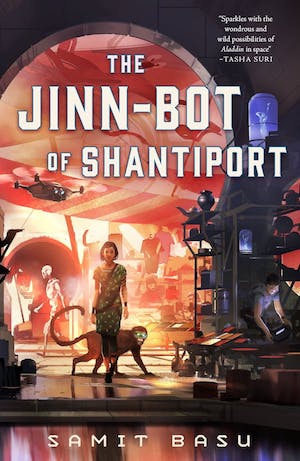

The Jinn Bot of Shantiport
Doc Sidhe takes that basic premise and combines it with threads drawn from Celtic mythology and fantasy. When I first read the book, I was relatively unfamiliar with the Celtic influence, beyond the elements that had worked their way into popular culture. But in the intervening years, through playing Irish music in pubs, I’ve encountered people who held Wiccan and Pagan beliefs, and have read up on the mythology that was behind some of the songs I was singing. So, in this re-read, I was able to really appreciate how Allston skillfully weaves the elements of that mythology into the world of a 1930s pulp adventure.
He uses the concept of a “fair” and “grim” world to create a setting where magic is more powerful than science. He establishes the fact that the fair world’s history follows that of the grim world, although it lags behind by a half-century or so, which sets up a world of the 1930s existing beside our own more modern reality. And he cleverly imagines what the world of Celtic mythology might be like if it had experienced the kind of technological progress we’ve seen in the real world—it is a realm of elves, fairies, and other mythical people, but living in a culture similar to that of our own in the early 20th century. Allston’s protagonist, Doc Sidhe, approaches the magic of that world with the same pragmatic approach Doc Savage approaches science in his own tales.
Such a mix might not work in other hands, but Allston, like many writers who’ve worked in the gaming industry, is meticulous in his worldbuilding. The mix of retro pulp adventure and fantasy ends up blending together remarkably well, and underpins an exciting and engaging adventure tale.
One major difference between this book and the adventures of Doc Savage is that this story is not intended to be read as one of many serialized episodes. Thus the stakes are much higher than in one of those episodes: Characters can die, and the status quo can be turned on its head. This gives Doc Sidhe a much more vivid sense of jeopardy, increases the stakes, and lends the story an urgency that Doc Savage adventures sometimes lacked.
Doc Sidhe
The book opens in our own world, with professional martial artist Harris Greene losing a fight. His manager tells him he is dropping him, and that his career is over. Harris’ story is intercut with that of a team of murderous gangsters on some as-yet unknown mission. He meets his girlfriend, Gabriela Donohue, or Gaby, who announces that their relationship is not working and she wants to break up. Gaby goes home, only to find those murderous gangsters waiting to kidnap her. Harris, wanting to talk things over some more, arrives just in time to witness Gaby being carted off toward Central Park, toward a spot surrounded by symbols marked with white rocks. She’s dropped her bag—a fanny pack (or bumbag, depending on where you’re from)—and he puts it on as he races after her, fighting one of the kidnappers, a giant man, only to find that the man is not human at all. And then there is a strange transition—Harris and the others are in another place, which he does not recognize. He fights his way free of the gangsters, not sure where Gaby has gone.
Harris runs from another attacker, fleeing through streets paved with brick and filled with strange, old-fashioned cars. He jumps into the back of a delivery truck to escape, and when it reaches its destination, finds the driver is a kindly man, Brian Banwite of Banwite’s Talk-Boxes and Electrical Eccentricities. Banwite gives him a strange coin so that Harris can buy a meal and tells him he is in the city of Neckerdam. The city reminds him of his own, but all the details are different…and many of the people have pointy ears. A man in a garish red tuxedo steps out of a car and introduces himself as Jean-Pierre. He says he is from an organization that can help Harris. He approaches and Harris instinctively puts up a fight, but finds himself overcome by the man’s woman companion.
Harris awakens in the care of surgeon Alisdair Kornbock, who introduces him to Jean-Pierre Lamignac, the man who approached him, and Noriko Namura, the woman who knocked him out. They tell Harris he is in the Monarch Building, in the penthouse headquarters of the Sidhe Foundation, an organization led by the mysterious Doc Sidhe. They show Harris a picture, and confirm that one of his attackers is an old enemy of theirs, Angus Powrie. Harris starts asking them about New York, and they show him a map that helps him realize while the geography is the same, he is now in a different world. Meanwhile, a group of men show up in the Monarch building, purporting to be a musical band, but with an intent to attack Harris’ new acquaintances.
Doc Sidhe arrives by rotorkite, and listens to Harris’s story again. Doc is an imposing figure, tall and strong, with long white hair and blue eyes. They notice Gaby’s fanny pack and ask him questions about her (with a joke tied to Gaelic spellings and pronunciations—Doc’s nickname is pronounced SHEE, by the way, and is the Gaelic word for spirit). The team give Harris back his possessions, and are amazed that he carries a steel pocketknife—to their kind, iron and steel are poisonous. Then Gaby appears on their talk-box, but this is not Harris’ Gaby, it is someone already known to Doc, someone who has as yet only appeared to him as an image on a cathode-ray tube.
Suddenly the band attacks, using a device which paints a circle they can use to pass into Doc’s supposedly impregnable headquarters, and there is a pitched battle, where Harris acquits himself well. He finds himself drawn deeper into the Sidhe Foundation, of which Doc and his acquaintances are just a small part… I will leave the detailed recap there. Doc, Harris, and company have a number of mysteries to solve. Why do the villains want Gaby, and what is her tie to the mysterious woman who shares her name? How has the veil between the fair and grim worlds, long thought closed, become permeable again? And what has driven these villains to attack Doc Sidhe, one of the most powerful people in their world?
There is action, plenty of compellingly described fight scenes, puzzles to unravel, new friendships, tragedy, and adventure. Fans of the old pulp adventures will enjoy spotting the differences and similarities between Doc Savage, Doc Sidhe, and their various associates (and Allston definitely has some fun with that concept). And through it all, I was captivated at how Allston shows how the world of Celtic legend had been transformed by technology, yet remains shaped by magic and strange customs.
Final Thoughts
Doc Sidhe is a great book, even better the second time through than the first. Allston has a knack for writing action scenes, and his meticulous worldbuilding is as captivating as the plot. The book mixes two very strong and very distinct literary traditions together, but makes the sum of those parts work in a marvelous way.
Now it’s time for me to stop talking, and start listening: I’d be interested to hear the impressions of others who have read Doc Sidhe, and what you thought of the book. And I’d also like to hear of other stories you have read that successfully mix genres in a similar way, creating a whole that is greater than the sum of its parts. And I wonder—in bookstores like Barnes & Noble and many others, which have separate science fiction and fantasy shelves, where do you think they would put Doc Sidhe?










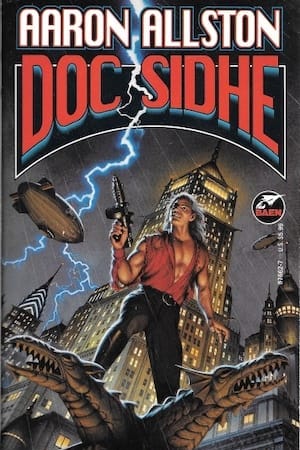
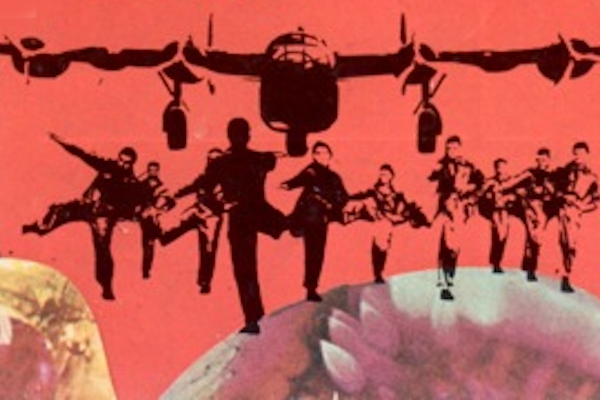

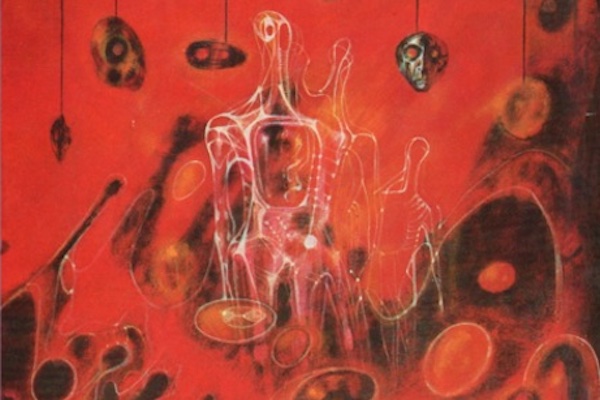
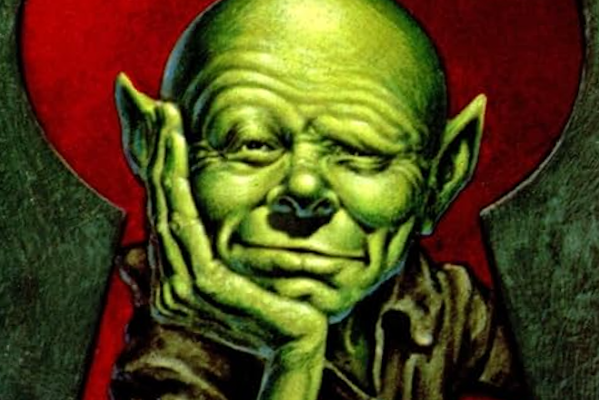
Doc Sidhe is one of my favorite genre blends, capturing the essence of the Doc Savage pulp, but also the kind of urban fantasy blend that was kind of kicking off in the mid-90s and making it awesome. The pacing, details, and action are all excellent I think.
Plus, Aaron Allston produced some of the best RPG stuff of the 80s.
I remember reading both this and the follow up but being very confused by the genre blending. I was a long time Doc Savage reader, but the only Celtic folklore I had been exposed to was some re-mixed/modernised adventures of Finn McCool and generalized faerie stories. I didn’t enjoy the mashup at all, though now with more remove from the 1930s I might be able to get into them more.
I am a little surprised that these are old enough to count as “classics” :)
@2 visentient. For the purpose of this column, I think of anything from the last century as ‘old’ or ‘classic,’ a viewpoint that often makes me feel old.
#0/OP: I quite liked Doc Sidhe when I read (and reviewed) it back in the day – and have held onto that book and its sequel through the inevitable weeding that happens over the decades. (Indeed, I find on glancing at Sidhe-Devil that I’m quoted on both front and back covers, albeit with an impressive number of ellipses.) My take then was much like yours above; highlighting the genre-bending and the deft balance between pulp action and pure fantasy. Between cover design and the overall narrative texture, I’d expect it to be shelved as fantasy anywhere where “pure” science fiction is sorted separately.
As to other multi-genre material…
From the “classic” era, I’d cite Esther Friesner’s Druid’s Blood, which is a Sherlock Holmes pastiche/homage that long precedes Gaiman’s A Study in Emerald in pitting her Holmes surrogate against Lovecraftian elder gods – and also invokes some of the Celtic lore Allston is drawing on in Doc’s adventures.
More recently, I highly recommend Gigi Pandian‘s The Accidental Alchemist and its sequels. Published as mysteries, they are also legitimately fantasy, as one of the dual leads is a genuine non-Disney gargoyle, one Dorian Robert-Houdin (created by the historical French alchemist). His co-protagonist is Zoe Faust (no relation), and we meet the two in one of the best fictional renderings of Portland, Oregon I’ve found in any genre. While Pandian’s novels can technically be classified as “cozy” in modern terms – there are recipes (one of Dorian’s passions being cookery) and a mildly quirky ensemble cast, her narrative tone is quiet and thoughtful, quite unlike the slightly zany aura that permeates the cozy racks nowadays. And the fantastical component here is deeply woven through the books, as Pandian has done considerable research into the history and cosmology of alchemical practice.
Michael Swanwick’s Iron Dragon books (The Iron Dragon’s Daughter, The Dragons of Babel, The Iron Dragon’s Mother) are all set in a Faerie that has undergone an industrial revolution that mirrors that of our own world, but with a strong dependence upon magic. Like anything of Swanwick’s they’re very good reads.
And Poul Anderson’s Operation Chaos and Operation Luna were both set in a world like ours, but in which a way of systematically studying and applying magic had been discovered early in the 20th Century. A lot of fun, the both of them.
WAIT, THERES A SEQUEL?!?!
man, I loved the book, though I’m a huge pulp nerd – the Shadow, The Avenger, Doc Savage, even the later stuff like The Destroyer. I loved this book, I’m glad there’s a sequel, and I’m glad it holds up!
I remember when this first came out, thinking how it felt like something that might have appeared in “Unknown” magazine.